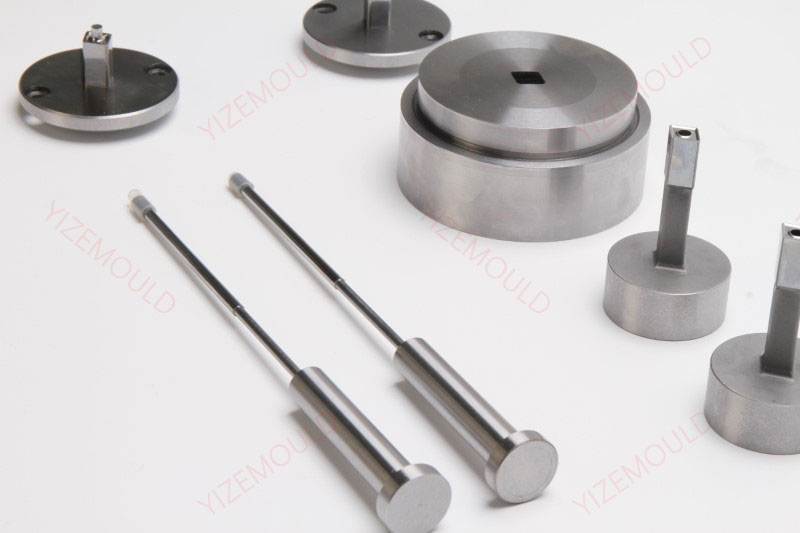What are carbide tools made of?
Carbide tools include many products such as drill bits, blades, cutting tools, milling cutters, wear-resistant mechanical parts, and mold components. The manufacturing materials of carbide tools are classified based on […]
Carbide tools include many products such as drill bits, blades, cutting tools, milling cutters, wear-resistant mechanical parts, and mold components. The manufacturing materials of carbide tools are classified based on the materials of carbides. They are classified according to different chemical compositions and have different performances, advantages, disadvantages, and applications.

Our factory business: carbide parts, mold parts, medical injection molds, precision injection molds, teflon PFA injection molding, PFA tube fittings. email: [email protected],whatsapp:+8613302615729.
Tungsten cobalt-based carbide
The main components are tungsten carbide and cobalt. This type of hard alloy has low cost and performs well in cutting materials such as cast iron, non-ferrous metals, and non-metals. However, it has relatively lower hardness and is not efficient in cutting high-hardness materials.
- Advantages: Low cost, suitable for common materials like cast iron.
- Disadvantages: Relatively moderate hardness, not effective for high-hardness materials.
- Applications: Cutting tool heads, saw blades, etc., for cast iron.
Tungsten titanium cobalt-based carbide
The main components are tungsten carbide, titanium carbide, and cobalt. It exhibits high cutting speed and tool life when cutting carbon steel and alloy steel. However, it has a relatively higher cost.
- Advantages: High efficiency in cutting steel, good wear resistance.
- Disadvantages: Relatively higher cost.
- Applications: Circular saws, drill bits, etc., for steel processing.
Tungsten titanium tantalum (niobium)-based carbide
Also known as universal carbide or versatile carbide. The main components are tungsten carbide, titanium carbide, tantalum carbide (or niobium carbide), and cobalt. This type of hard alloy is suitable for cutting difficult-to-machine materials such as stainless steel and is the most widely used universal grade. However, it has the highest cost.
- Advantages: Suitable for cutting various difficult-to-machine materials.
- Disadvantages: Relatively higher cost.
- Applications: Lathe tools, off-axis machining, precision manufacturing tools, etc.
Titanium carbide-based carbide
The main components are titanium carbide and binding phases such as nickel and molybdenum. It has high red hardness and magnetic resistance.
- Advantages: Extremely high red hardness, maintains good hardness at high temperatures; excellent magnetic resistance suitable for environments influenced by magnetic fields; high cutting speed, long tool life.
- Disadvantages: Expensive compared to tungsten cobalt alloys, lower cutting performance for high solubility materials.
- Applications: Processing aerospace and nuclear industry components that require resistance to high temperatures and magnetic fields; hydrogenation and cutting of difficult-to-cut materials like stainless steel and nickel-based alloys; suitable for high-efficiency cutting in high-end precision machining tools.
Ultrafine grain carbide
This type of hard alloy uses ultrafine WC powder as raw material, reducing the grain size to the sub-micron level.
- Advantages: Extremely high hardness and wear resistance, excellent resistance to wear.
- Disadvantages: Difficult to process, high product price.
- Applications: Used in places requiring long-term work and severe wear, such as mining machinery.
Surface-coated carbide
A hard coating layer or multiple layers are applied using technologies like CVD or PVD on hard alloy tools with higher toughness to improve tool performance.
- Advantages: High hardness and wear resistance while maintaining a good tough substrate.
- Disadvantages: Limited coating lifespan, requiring coating replacement.
- Applications: Suitable for cutting tools that require frequent replacement.
Steel-bonded carbide
WC or TiC is the hard phase, and high-speed tool steel is used as the bonding phase, possessing properties between carbide and high-speed steels.
- Advantages: Good toughness, wide range of applications.
- Disadvantages: Slightly lower hardness compared to ordinary carbide.
- Applications: Cutting under high temperatures or extreme conditions, such as hot working.
In summary, selecting the optimal carbide tools material based on working conditions can achieve optimal work efficiency. For customized carbide parts and carbide processing, please feel free to contact us.
Related Posts
- Unveiling the Key Factors Affecting the Lifespan of Tungsten Carbide Bushings
- Tungsten Carbide Punch Maintenance Tips: The Essential Guide to Extending Lifespan
- Comprehensive Analysis of Tungsten Carbide Machining Advantages
- Key Considerations for Using Tungsten Carbide Parts: What You Need to Know!






